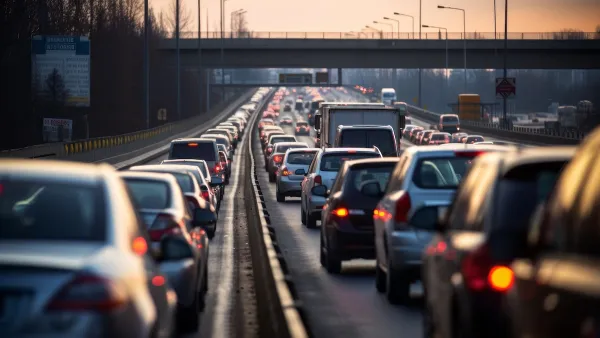Eric Jaffe examines research on just what it is that makes people walk faster in New York than, say, Fargo, North Dakota.
If you've ever had a creeping suspicion that city dwellers seem a little more frenetic on foot than their small-town counterparts, it turns out there's ample research to back it up.
According to Jaffe, "Most work on urban walking speed dates back to 1976, when psychologists Marc and Helen Bornstein published a provocative paper linking "pace of life" with population size. The Bornsteins found that people in Brooklyn (pop. 2.6 million) walked more than twice as fast as people in Itea, Greece (pop. 2,200), and posited that hurrying one's gait was a natural response to overcrowding, to reduce "social interference."
In 1989 and again in 1999, however, other researchers set out to support an alternative explanation: that population is merely a surrogate for the true determinant of walking speed, economic success. Both studies found that "pace of life" indicators were significantly higher in cities located in countries with high GDP and purchasing power parity.
Jaffe offers the following summary of their explanation: "When a city grows larger, wage rate and cost of living increase, and with that the value of a resident's time."
In addition to economic considerations, Robert Levine's 1999 study found individualism to be a strong "social predictor of walking speed."
Levine's work is discussed in an animated lecture by Philip Zimbardo for the Royal Society of the Arts.
FULL STORY: Why People in Cities Walk Fast

Maui's Vacation Rental Debate Turns Ugly
Verbal attacks, misinformation campaigns and fistfights plague a high-stakes debate to convert thousands of vacation rentals into long-term housing.

Planetizen Federal Action Tracker
A weekly monitor of how Trump’s orders and actions are impacting planners and planning in America.

In Urban Planning, AI Prompting Could be the New Design Thinking
Creativity has long been key to great urban design. What if we see AI as our new creative partner?

King County Supportive Housing Program Offers Hope for Unhoused Residents
The county is taking a ‘Housing First’ approach that prioritizes getting people into housing, then offering wraparound supportive services.

Researchers Use AI to Get Clearer Picture of US Housing
Analysts are using artificial intelligence to supercharge their research by allowing them to comb through data faster. Though these AI tools can be error prone, they save time and housing researchers are optimistic about the future.

Making Shared Micromobility More Inclusive
Cities and shared mobility system operators can do more to include people with disabilities in planning and operations, per a new report.
Urban Design for Planners 1: Software Tools
This six-course series explores essential urban design concepts using open source software and equips planners with the tools they need to participate fully in the urban design process.
Planning for Universal Design
Learn the tools for implementing Universal Design in planning regulations.
planning NEXT
Appalachian Highlands Housing Partners
Mpact (founded as Rail~Volution)
City of Camden Redevelopment Agency
City of Astoria
City of Portland
City of Laramie




























